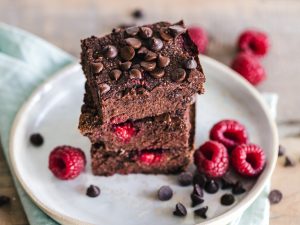Chocolate, an indulgence often associated with pleasure and comfort, is increasingly being recognized for its potential role in couples therapy. Beyond just its delightful taste and luxurious texture, chocolate has unique properties that can be harnessed as an effective tool for communication and connection in therapy sessions.The act of sharing chocolate can create a shared experience that breaks down barriers and promotes open and honest conversations.
Moreover, chocolate’s physiological effects on the brain and body make it more than just a sweet treat.The psychoactive compounds found in chocolate have been found to reduce tension, improve mood, and stimulate pleasurable experiences. This not only creates a positive and relaxed atmosphere but also facilitates a more receptive state for couples to work through their challenges.
For example, imagine a couple engaging in a chocolate tasting activity during a therapy session. As they explore different flavors and textures, they’re encouraged to communicate their experiences and reactions to each other. This simple act of sharing experiences and preferences can foster deeper understanding and empathy among partners.
Understanding Chocolate Consumption and its Effects



Many individuals experience cravings for chocolate, but these cravings can often be accompanied by feelings of guilt or the urge to resist eating it. These negative associations with chocolate can lead to problems with weight maintenance, unhealthy eating behaviors, and reduced quality of life. However, rather than making chocolate off-limits, it’s more effective to create a healthy relationship with it, allowing enjoyment in moderation.
Particularly, dark chocolate has been lauded for its health benefits due to its antioxidants and flavonols. These benefits include improving heart health, balancing the immune system, combating diabetes, improving brain function, boosting athletic performance, and reducing stress. When we consider these benefits in the context of couples therapy, it’s clear that chocolate isn’t just a tool for communication, but a catalyst for overall well-being.
In a therapy session, for instance, a therapist might offer a couple dark chocolate to share. As they savor the treat, they do not only enjoy the taste but also reap the health benefits it offers. This shared positive experience can create a foundation for open dialogue, facilitating the therapeutic process.
The Science Behind Chocolate and Mood Enhancement
A study examining the relationship between chocolate consumption and depressive symptoms in a large sample of U.S adults found that dark chocolate consumption was associated with significantly lower odds of depressive symptoms. Participants who consumed the highest amount of chocolate had 57% lower odds of depressive symptoms compared to those who consumed no chocolate. These findings suggest that consuming chocolate, particularly dark chocolate, may be linked to reduced depressive symptoms.
This clear link between dark chocolate consumption and mood enhancement offers a compelling reason to incorporate chocolate into couples therapy. For couples struggling with tension, stress, or depressive symptoms, sharing a piece of dark chocolate during therapy sessions could provide a mood boost and foster a more positive and productive atmosphere.
Consider a couple who begins each therapy session by sharing a piece of dark chocolate. Over time, they might find that they start each session in a more positive frame of mind, leading to more effective communication and problem-solving during the session.
Psychoactive Compounds in Chocolate
Chocolate is not only delicious but also contains psychoactive compounds such as caffeine, theobromine, PEA, and anandamide. These ingredients contribute to its ability to reduce tension, improve mood, and elicit an addictive-like response. The combination of fat, sugar, and psychoactive molecules in chocolate stimulates reward systems in the brain, leading to feelings of well-being and pleasure.
For instance, in a couples therapy session, a therapist might invite the couple to each take a bite of a chocolate bar. As they savor the chocolate, the psychoactive compounds present begin to work, triggering their brain’s reward system and fostering feelings of well-being. This can create a positive and relaxed atmosphere that facilitates open and constructive communication.
The Sugar Factor in Chocolate
While dark chocolate is known for its health benefits, it’s important to acknowledge the role of sugar in chocolate’s allure. A study found that milk chocolate, with its higher sugar content and lower cocoa content, elicited the greatest increase in feelings of well-being and euphoria. The sugar content of chocolate, therefore, plays a significant role in determining its potential to improve mood and create positive experiences.
Imagine a couple in therapy sharing a piece of milk chocolate. The sugar content in the chocolate can elicit feelings of well-being and euphoria, creating a positive atmosphere conducive to open dialogue and connection. Thus, while dark chocolate offers more health benefits, milk chocolate can also play a role in enhancing couples therapy sessions.
Chocolate Consumption: Portion Size and Caloric Content
While the benefits of chocolate are numerous, it’s essential to consider portion size and caloric content when incorporating it into therapy sessions.Chocolate contains fat, sugar, and calories that, if consumed excessively, can lead to weight gain and related health problems.
The percentage of cocoa on the label indicates the concentration of flavonoids, with dark chocolate containing at least 70% cocoa for the finest dark chocolate. Different types of chocolate have different calorie and fat content, with pure cocoa powder having the lowest calories and fat.
For example, a therapist might suggest a couple share a small piece of high-quality dark chocolate during their session. This allows the couple to enjoy the benefits of chocolate without worrying about excessive calorie or fat intake.
Chocolate in Couples Therapy
The unique properties of chocolate make it a valuable tool in couples therapy. The act of sharing chocolate can create a shared experience that promotes communication and connection. Furthermore, the physiological effects of chocolate on the brain and body can contribute to a more receptive state for couples to work through their challenges.
Consider a couple who are struggling with communication. A therapist might introduce a chocolate tasting exercise, where each partner describes the flavors they taste. This exercise encourages both verbal communication and active listening, helping the couple to understand each other better and improving their relationship in the process.
Creative Ways to Incorporate Chocolate into Couples Therapy sessions
There are numerous creative ways to incorporate chocolate into couples therapy sessions. A simple chocolate tasting session can be an effective way to encourage communication and foster connection. During this activity, couples can explore different types of chocolate, discuss their preferences, and learn to appreciate their partner’s tastes.
For example, the couple might be presented with a variety of chocolates, each with different cocoa contents. As they taste each one, they discuss their reactions and preferences. This activity not only facilitates communication but also provides an opportunity for the couple to understand and appreciate their differences.
Revisiting the Benefits of Dark Chocolate in Couples Therapy
The specific benefits of dark chocolate in couples therapy cannot be overstated. Consuming dark chocolate during therapy sessions can help reduce depressive symptoms, enhance communication, and foster a positive and relaxed atmosphere. The psychoactive compounds found in dark chocolate stimulate the brain’s reward systems, leading to feelings of well-being and pleasure.
Consider a couple who regularly consumes a small piece of dark chocolate during their therapy sessions. Over time, they might find that they not only look forward to this ritual but also start each session in a more positive and relaxed state of mind. This simple act of sharing dark chocolate can significantly enhance the quality and effectiveness of their therapy sessions.

